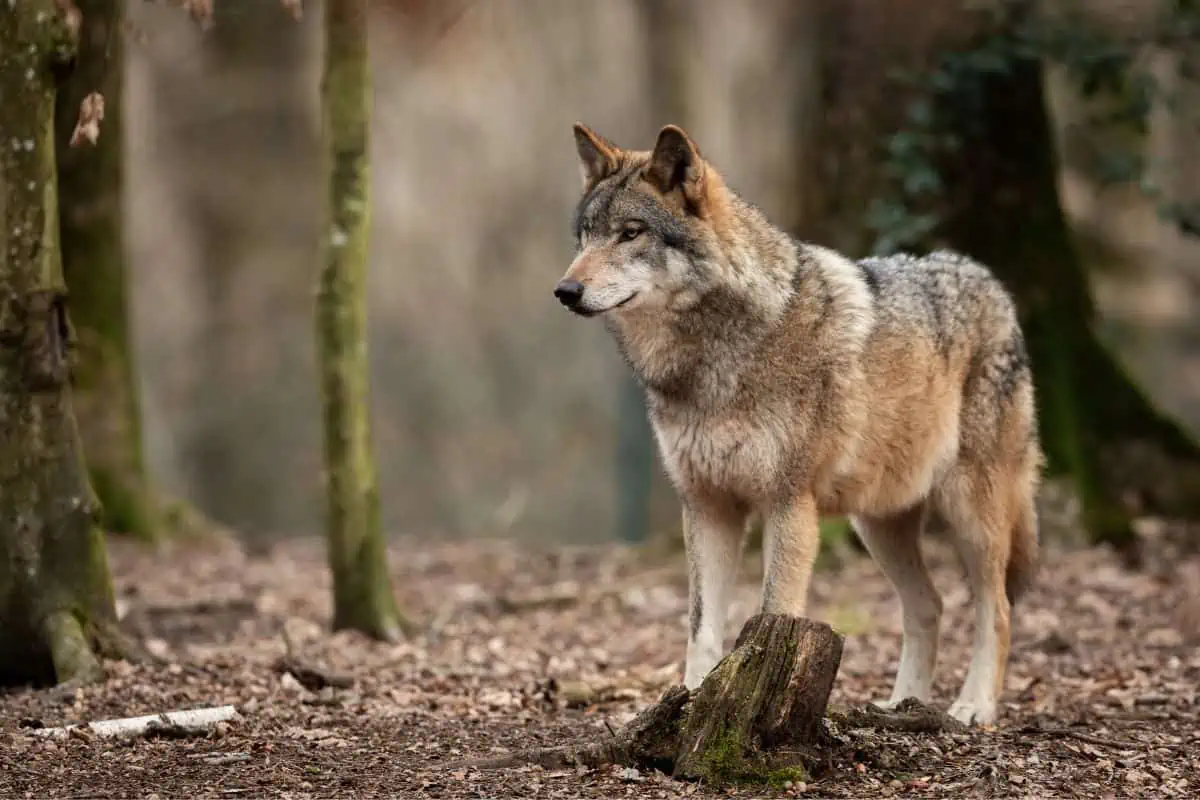Wolves, the largest members of the Canidae family, exhibit remarkable diversity in size and physical characteristics across their global range. Typically measuring 105-160 cm in length and standing 80-85 cm at the shoulder, their size varies with geography, adhering to Bergmann’s rule, which links size to latitude.
European wolves average around 38.5 kg in weight, North American wolves about 36 kg, and Indian and Arabian wolves approximately 25 kg. This article delves into the fascinating details of wolf sizes, exploring how geographical factors and environmental adaptations shape these majestic predators’ physical attributes.
Jump Links:

Wolf Size Varies Significantly Across Regions and Sexes
Adult wolves typically measure 105-160 cm in body length, with a shoulder height ranging from 80-85 cm. The weight of wolves varies widely, influenced by geographic location following Bergmann’s rule.
On average, European wolves weigh about 38.5 kg, North American wolves weigh approximately 36 kg, and wolves from India and Arabia weigh around 25 kg. Generally, male wolves are larger and heavier than their female counterparts, often by 2.3-4.5 kg.
Physical Traits Tailored for Agility and Strength
Wolves are built for power and agility, essential for survival in the wild. Their physical structure includes a large, deeply descending rib cage, a sloping back, and a heavily muscled neck.
Combined with their relatively long legs, these characteristics enable wolves to move swiftly and navigate through deep snow during winter.
The skull of a wolf measures 230-280 mm in length and 130-150 mm in width, supporting strong jaws and large teeth, which are more effective for crushing bone than those of other canids.
Adaptations in Wolf Fur for Extreme Weather Conditions
The wolf’s fur is specially adapted to its environment. In colder climates, wolves have dense and fluffy winter fur with a short undercoat and long guard hairs, which are crucial for insulation against extreme cold.
The fur’s design allows wolves to rest comfortably in temperatures as low as -40 °C. In warmer climates, however, the fur is coarser and less dense. The fur also varies in color across regions, influenced by factors like geography and, in some cases, interbreeding with domestic dogs.
The Impact of Geography on Wolf Size and Adaptation
Their geographical location greatly influences the size and physical characteristics of wolves. Larger wolves are typically found in higher latitudes, a phenomenon explained by Bergmann’s rule, which states that animal size increases with latitude.
This rule is evident in the notable size differences between European, North American, and Indian/Arabian wolves. These geographical adaptations play a crucial role in the wolves’ survival, equipping them to navigate and hunt effectively in their specific environments, greatly impacting the diet of gray wolves.
Final Thoughts
Wolves exhibit a remarkable range in size and physical traits, deeply influenced by their geographic location and environmental demands.
These adaptations define their physical appearance and enhance their ability to thrive in diverse habitats worldwide.

